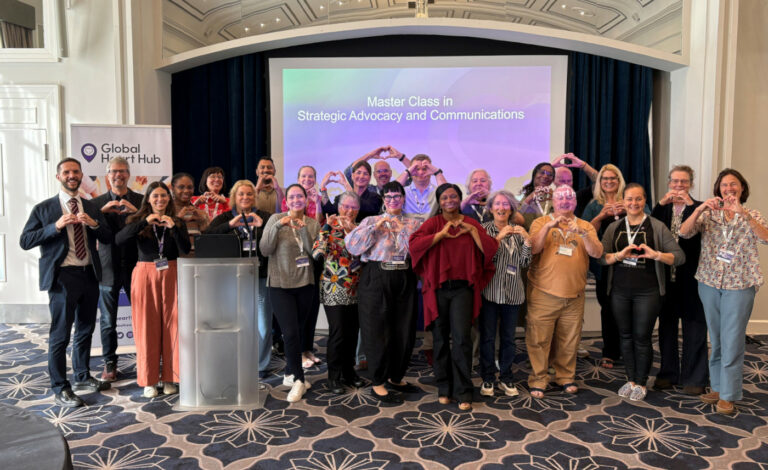The Symbiotic Relationship Between Communications and Advocacy Strategy in Policy Advocacy
In the dynamic world of policy advocacy, where influencing public policy and creating social change are the ultimate goals, the interplay between communications and advocacy strategy is crucial. Effective advocacy doesn’t just hinge on having the right message but also on delivering it through the right channels, at the right time, to the right audience. Here, we delve into how communications and advocacy strategies are intertwined, amplifying each other’s impact in the realm of policy advocacy.
Understanding Communications in Policy Advocacy
Communications in policy advocacy encompasses the methods and practices used to convey messages to various stakeholders, including policymakers, the public, and the media. It involves crafting clear, persuasive messages and using diverse channels—such as social media, press releases, public speeches, and newsletters—to disseminate these messages.
The Role of Advocacy Strategy
Advocacy strategy, on the other hand, refers to the systematic plan designed to influence policy change. It includes identifying goals, understanding the policy landscape, mapping key stakeholders, building coalitions, and planning actions that will drive the desired policy outcomes. An effective advocacy strategy is grounded in thorough research and a deep understanding of the policy process.
The Symbiotic Relationship
- Message Development and Framing
-
- Effective advocacy relies on messages that resonate with target audiences. Communications strategies help advocacy teams develop these messages by framing issues in ways that align with the values and interests of stakeholders. For example, advocating for environmental policies might involve framing the issue around public health benefits or economic opportunities.
-
- Targeted Outreach
-
- Communications strategies enable advocates to reach diverse audiences through tailored messaging and appropriate channels. This targeting ensures that policymakers, influencers, and the general public receive information in a manner that is accessible and compelling to them. A well-crafted email campaign to legislators, combined with a public social media blitz, can create a multi-layered impact.
-
- Building Public Support
-
- Public opinion can significantly sway policy decisions. Through strategic communications, advocates can raise awareness, shape public discourse, and mobilize grassroots support. Campaigns that use storytelling to highlight personal impacts of policy issues can humanize abstract concepts, making them more relatable and urgent.
-
- Media Engagement
-
- The media plays a pivotal role in shaping public perception and can act as a powerful ally in advocacy efforts. A robust communications strategy includes building relationships with journalists, crafting press releases, and securing media coverage to amplify advocacy messages. Positive media coverage can put pressure on policymakers to act and can validate the advocates’ positions.
-
- Monitoring and Evaluation
-
- Both communications and advocacy strategies benefit from ongoing monitoring and evaluation. By tracking media coverage, social media engagement, and public response, advocates can assess the effectiveness of their messages and tactics. This feedback loop allows for the refinement of strategies to enhance impact.
-
- Crisis Management
-
- In the volatile arena of policy advocacy, unexpected challenges and opposition can arise. A proactive communications strategy equips advocates with tools to manage crises, counter misinformation, and maintain credibility. Quick, transparent, and strategic communication can mitigate damage and keep the advocacy campaign on track.
-
Case Study: Advocacy for Climate Change Policy
Consider a campaign aimed at advancing climate change policy. The advocacy strategy might involve lobbying for specific legislation, collaborating with environmental organisations, and targeting key legislators. Concurrently, the communications strategy could focus on disseminating scientific research through infographics, sharing personal stories of those affected by climate change, and leveraging social media to engage younger demographics.
Through coordinated efforts, these strategies work in tandem. Communications amplify advocacy efforts by raising public awareness and support, while advocacy strategies provide the framework and goals for communication activities.
Conclusion
In policy advocacy, communications and advocacy strategy are not merely complementary—they are interdependent. Effective advocacy demands a strategic approach to communication, ensuring that messages are not only heard but also drive action. By weaving together these two critical components, advocates can maximize their influence, fostering meaningful policy change and advancing important causes and interests.
For those engaged in policy advocacy, recognising and harnessing the synergy between communications and advocacy strategy is essential. As the landscape of advocacy continues to evolve, the integration of these elements will remain pivotal in achieving sustainable and impactful change.
If you found this post useful, you can learn more about strategy, communications and advocacy at our upcoming course Strategic Policy Advocacy: Creating Campaigns with Impact.
Our three-day training course is designed to equip campaigners, advocates and communications experts with the tools to design an advocacy plan that will cut through the noise and be heard. The interlink between advocacy and communications will lay the foundation for learning how to embed strategy into your plans and create successful campaigns.
For a more bespoke training offering for your team or organisation, you can visit this page or contact us here.






